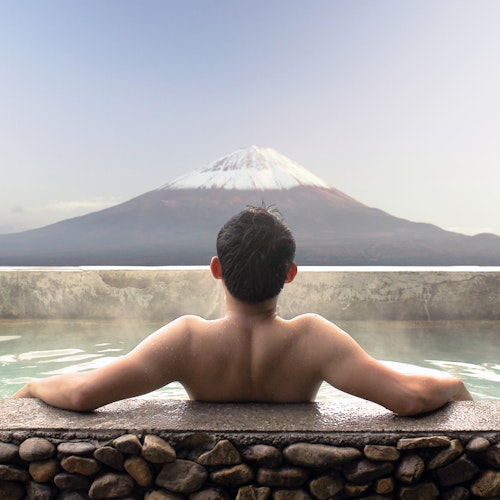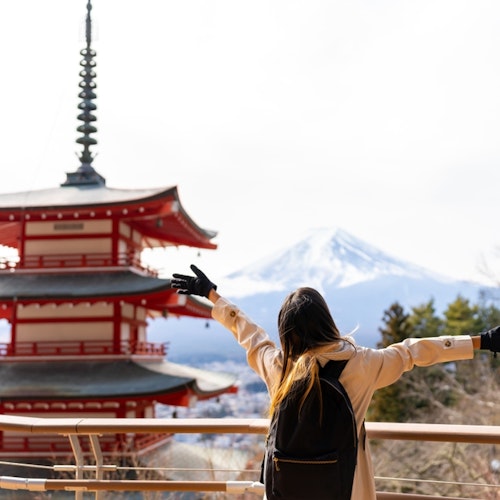
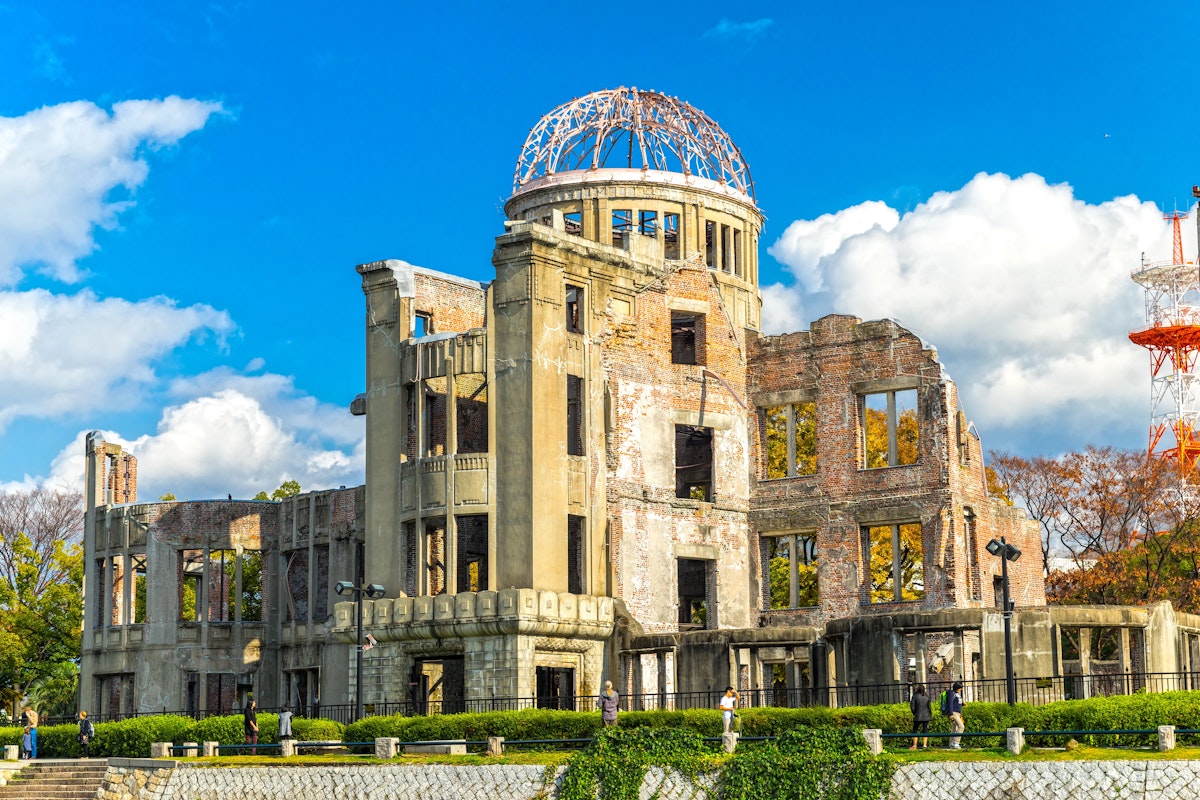
Hiroshima, a city with a profound historical legacy, also offers a plethora of natural wonders and outdoor adventures. This guide delves into the stunning landscapes, outdoor activities, and the historical significance that makes Hiroshima a unique destination.
Whether you're visiting for its rich history or scenic beauty, Hiroshima has something to offer every traveler.
Hiroshima, one of Japan's major cities, is globally recognized for its tragic history. On August 6, 1945, during World War II, the city was almost destroyed by an atomic bomb.
The devastating nuclear bombing resulted in the loss of thousands of lives and left a lasting impact on the survivors. Today, Hiroshima stands as a beacon of peace and resilience. Landmarks such as the Hiroshima Peace Memorial Museum and the Atomic Bomb Dome, both part of the UNESCO World Heritage site, are dedicated to honoring the memory of atomic bomb victims and promoting a nuclear-free world.
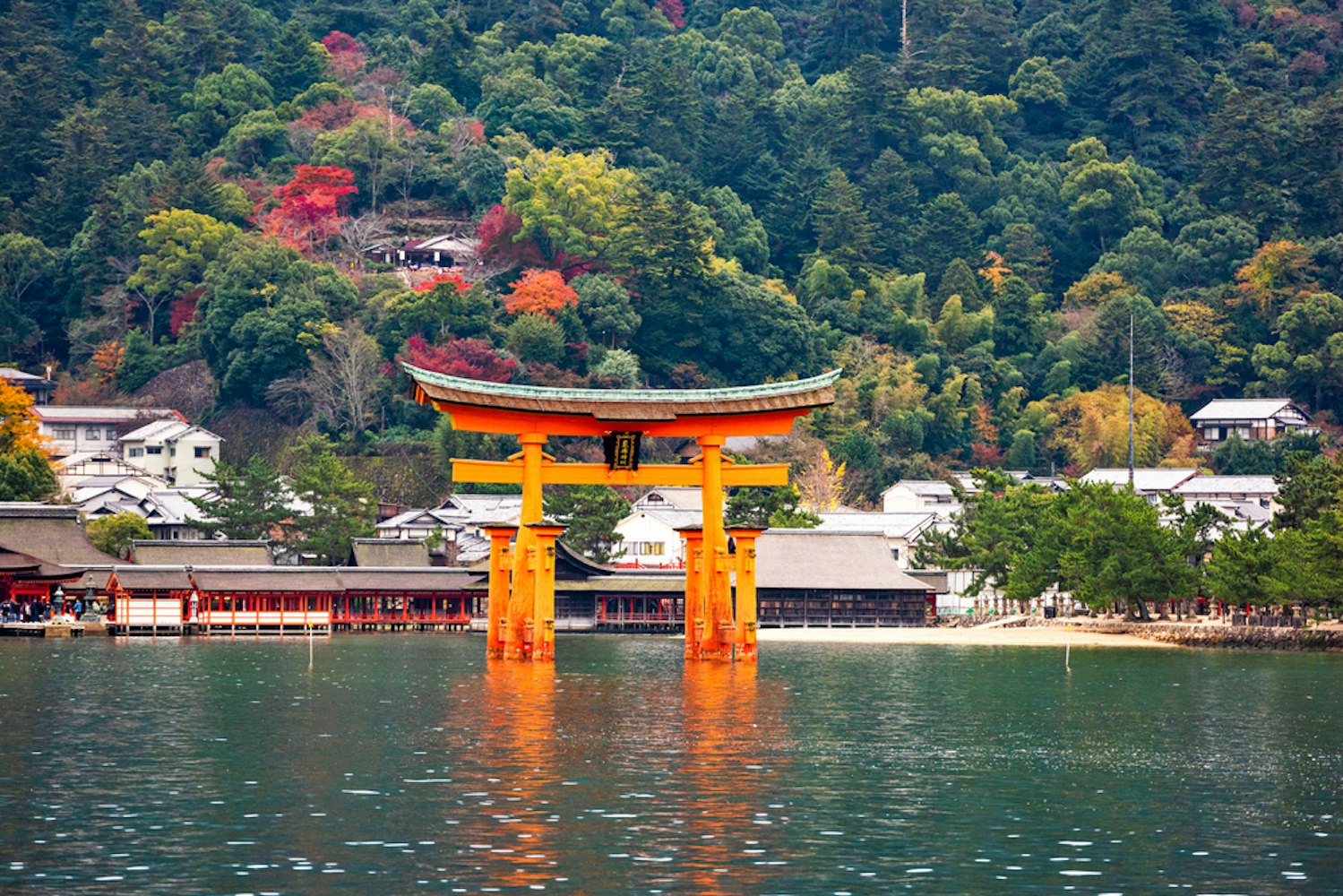
Miyajima Island, also known as Itsukushima, is renowned for its iconic Itsukushima Shrine, a UNESCO World Heritage site famous for its "floating" torii gate. The shrine, dating back to 593 AD, is uniquely built over water, giving the illusion of floating during high tide.
Visitors can experience the spiritual ambiance of the shrine, which is considered one of Japan's most beautiful locations, blending architecture and natural scenery. Additionally, Miyajima offers attractions such as Mount Misen, which provides breathtaking views and enriches the island's reputation as a must-visit natural wonder in Hiroshima Prefecture.

Uncover the mystique of Miyajima Island where the histories and practices of Shinto and Buddhism come alive.

Mount Misen, the highest peak on Miyajima Island at 535 meters, provides stunning panoramic views of the Seto Inland Sea and its surrounding landscapes. On clear days, you can see as far as Hiroshima City, making it a perfect spot for scenic hikes.
The mountain is renowned not only for its panoramic vistas but also for its rich spiritual history, with numerous Buddhist structures near the summit, including the Misen Hondo and Reikado Hall, which protects a flame said to have been lit by the founder of Shingon Buddhism, Kobo Daishi. Whether you hike one of the three main trails or take the ropeway partway up, reaching the summit is a rewarding experience, offering a blend of natural beauty and cultural heritage.
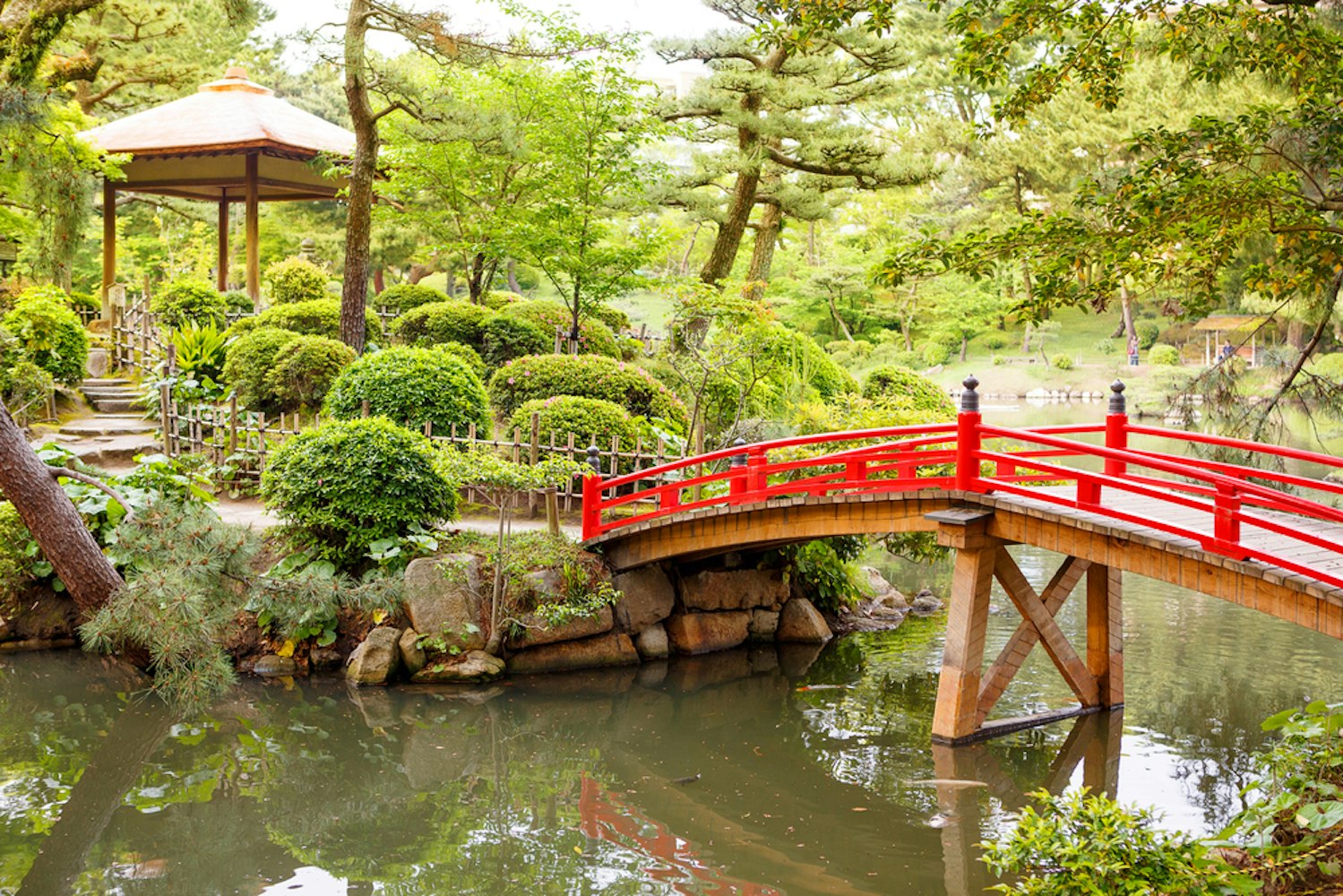
Shukkeien Garden, a splendid Edo-period garden located in the heart of Hiroshima, was commissioned in 1620 by Asano Nagaakira, the feudal lord of Hiroshima Castle. Designed by renowned tea master Ueda Soko, this historic garden embodies the essence of traditional Japanese landscaping with its central pond, picturesque bridges, and seasonal flora.
Despite suffering extensive damage during the atomic bombing in 1945, the garden has been meticulously restored to its former glory. It now serves as a serene retreat for both locals and tourists.
Visitors can enjoy Shukkeien's tranquil beauty throughout the year, making it ideal for a peaceful walk amidst nature's splendor.
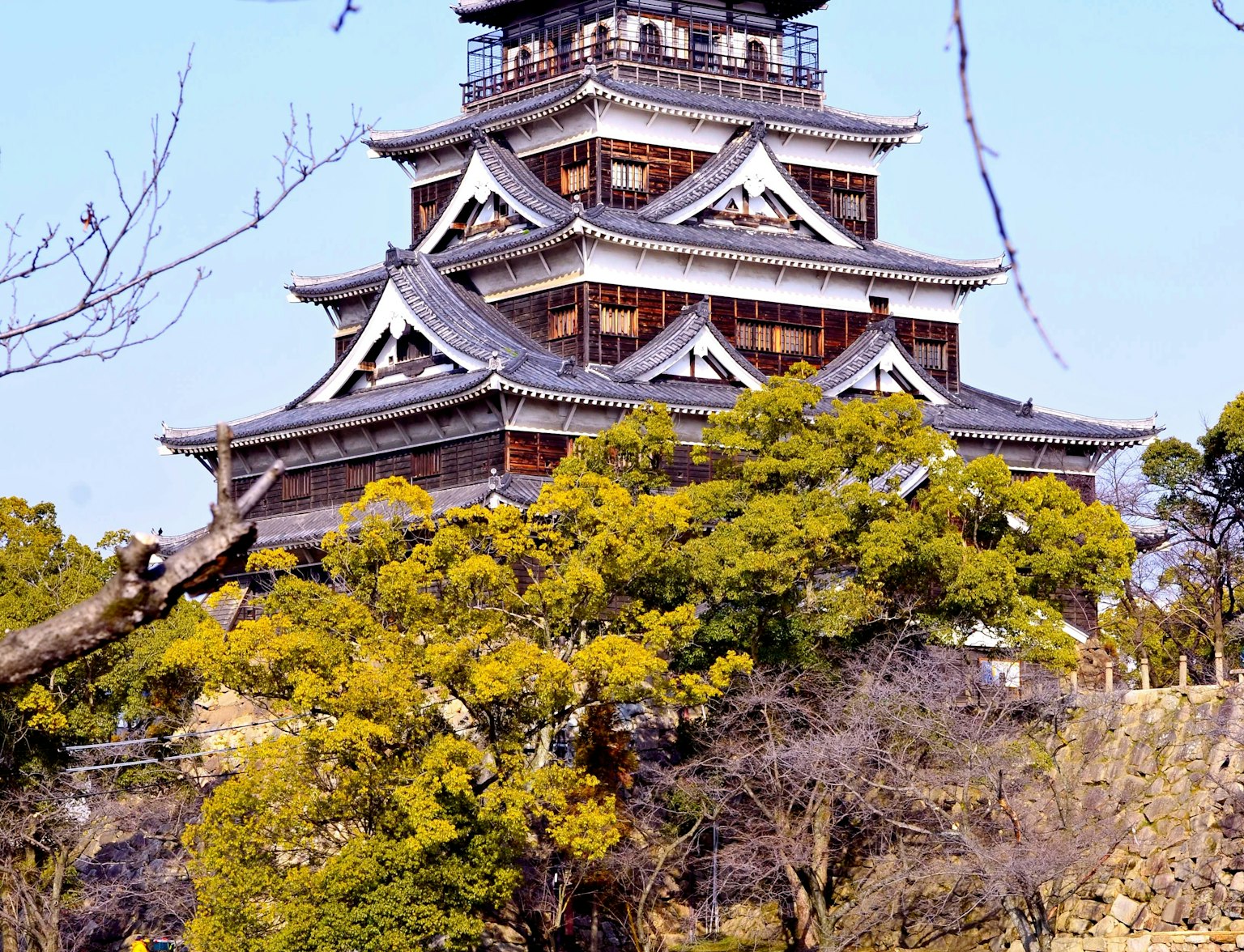
Discover the enchanting Shukkeien Garden with this tour.

Taishaku Valley, also known as Taishaku Gorge, is a stunning natural wonder in Hiroshima Prefecture. The valley stretches for 18 kilometers and is renowned for its dramatic rock formations, which have been sculpted over millions of years by the Taishaku River.
The crystal-clear waters of the river meander through the gorge, creating a serene and picturesque landscape perfect for hiking and nature walks. Visitors to Taishaku Valley can explore trails, footpaths, and bridges offering breathtaking views of the limestone cliffs and lush forests, making it a must-visit destination for nature enthusiasts.

Hiroshima Central Park, also known as Chuo Koen, is a 42-hectare green oasis in the heart of Hiroshima city. The park features expansive lawns, walking paths, and various facilities, such as the Hiroshima Museum of Art and Hiroshima Castle, making it ideal for a relaxing day trip.
Visitors can enjoy strolls, picnics, and even explore historical and cultural landmarks within the park. Its central location provides easy access, attracting locals and tourists looking to unwind amidst nature without leaving the city.
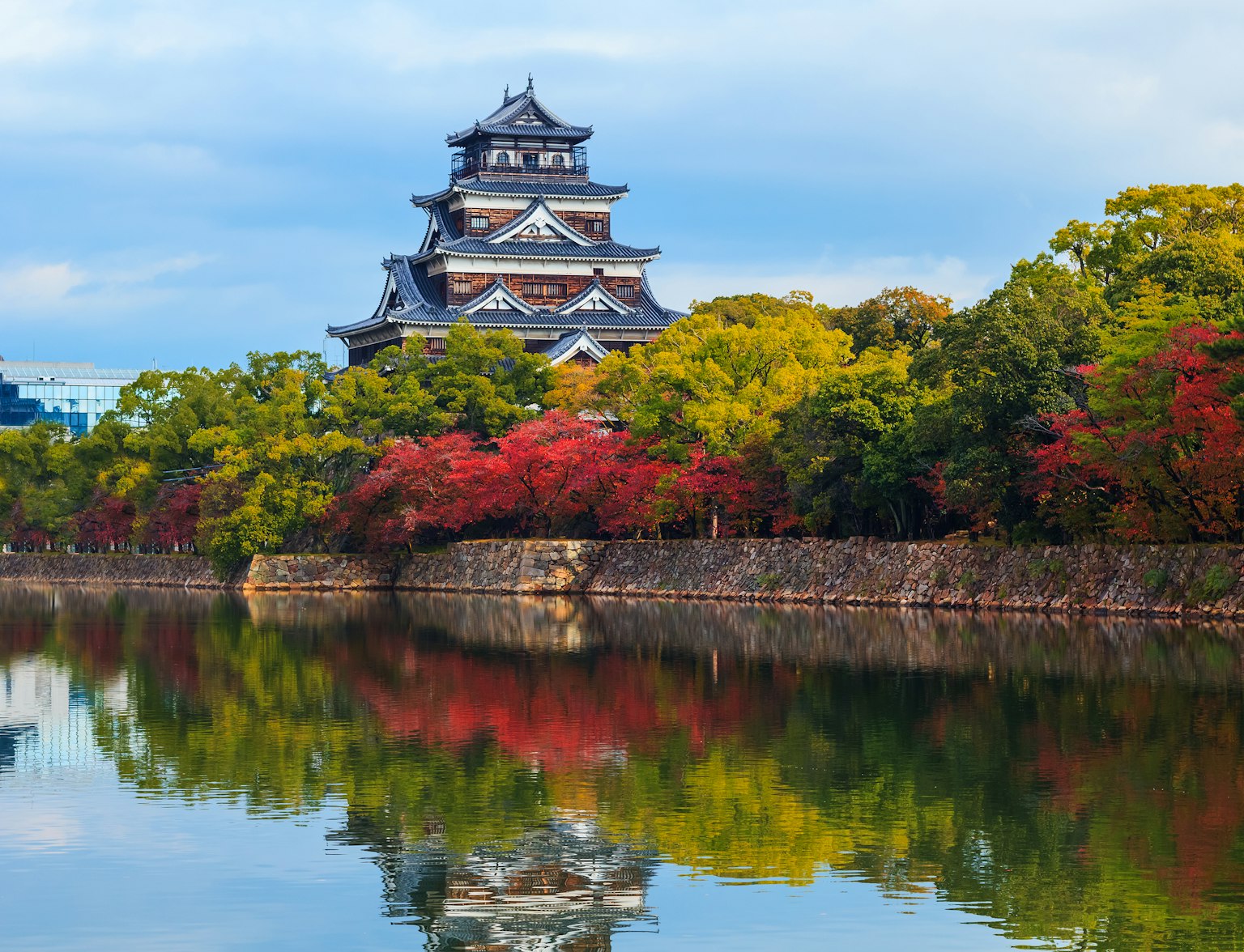
Don't miss the chance to take in sweeping views of Hiroshima from atop its observatory.

Setonaikai National Park, Japan's first and largest national park, offers an impressive array of landscapes spanning over 9,000 square kilometers. The park includes many islands, mountains, and coastal areas that showcase the natural beauty of the Seto Inland Sea.
Visitors can explore the park's diverse environments, from the serene white-sand beaches and dense pine forests to the dramatic rock formations and scenic islands connected by bridges. Notable attractions within the park include the famous whirlpools of the Naruto Strait, the scenic Shimanami Kaido cycling route, and the historic Itsukushima Shrine on Miyajima Island.

Passion for hiking in the Chugoku Mountains offers an unparalleled experience with scenic trails and breathtaking panoramic views. The Hibayama Mountain Range, including peaks like Mt. Hiba, Mt. Eboshi, and Mt. Kenashi, provides a range of hiking options, from easy walks to challenging climbs, all within a pristine natural setting.
Trails such as the Hibayama Hiking Trail take you through lush forests, rolling hills, and viewpoints that reveal stunning vistas of the surrounding mountains and valleys. Sandankyo Gorge, another highlight in the Chugoku Mountains, features a 16km trail with dramatic cliffs, serene rivers, and picturesque ferry rides that offer unique perspectives of the gorge's beauty.
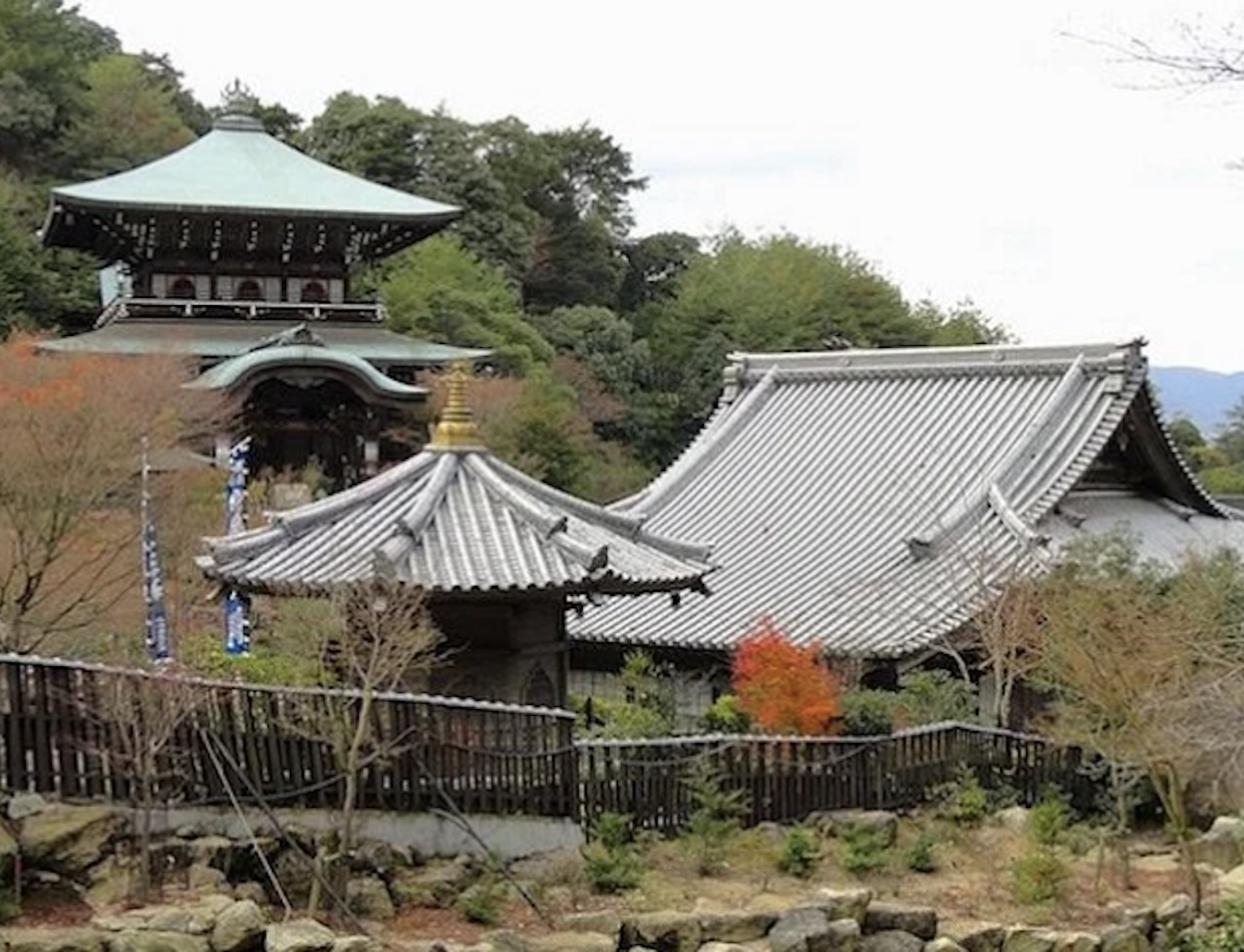
Experience the untouched beauty of Sandankyo Valley on a day tour from Hiroshima.

Cycling along the Shimanami Kaido is a renowned route connecting Onomichi in Hiroshima Prefecture to Imabari in Ehime Prefecture. This 70-kilometer journey spans six islands in the Seto Inland Sea, linked by a series of bridges, offering cyclists a panoramic view of the azure waters and lush landscapes.
The well-maintained path accommodates cyclists of all levels and provides opportunities to explore local attractions, historical sites, and scenic spots along the way. The route is trendy for its picturesque sunsets and unique island-hopping experience by bicycle.
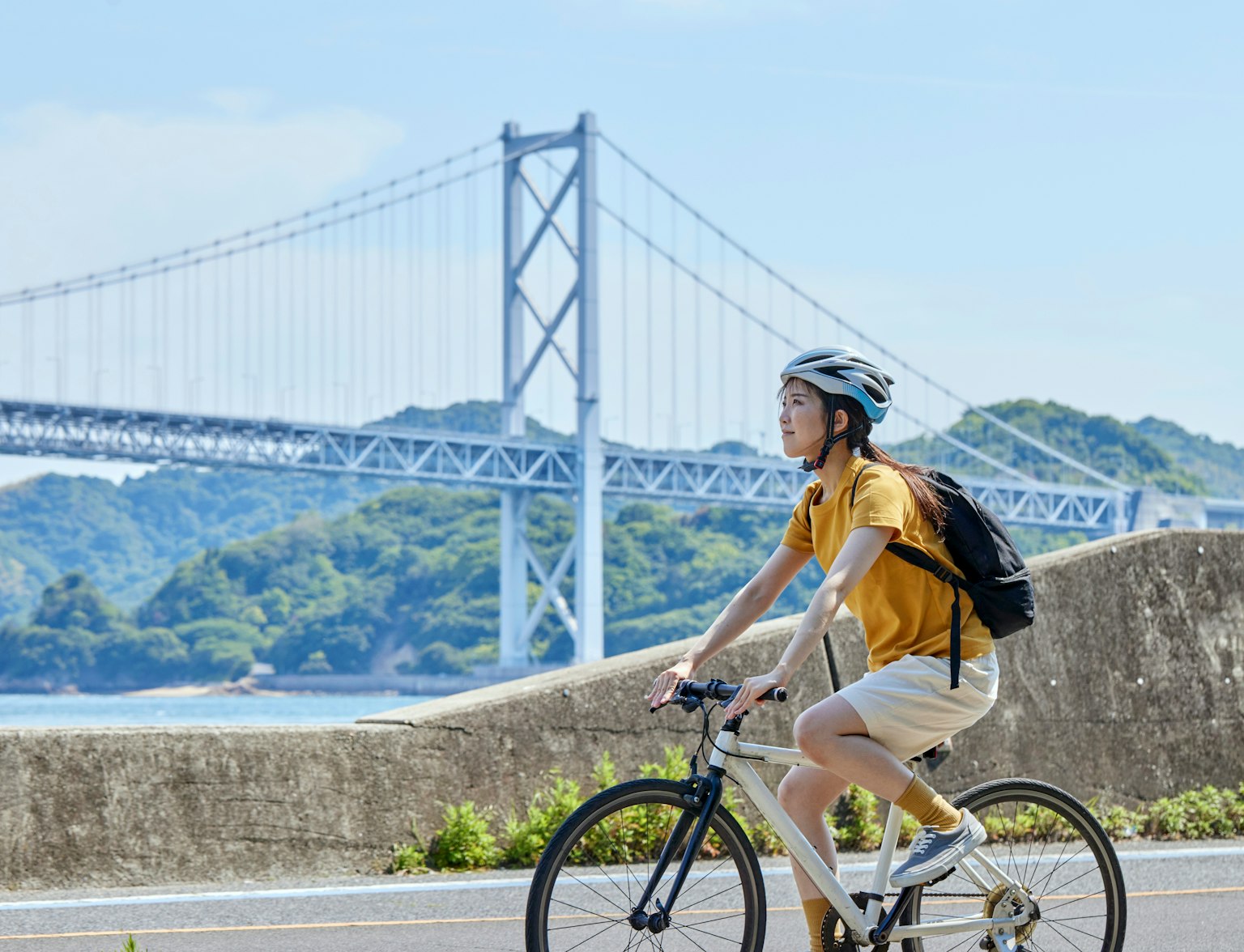
Embark on a captivating journey through the scenic Shimanami Kaido.

Sea Kayaking around Miyajima Island offers an extraordinary way to experience the iconic Itsukushima Shrine and its famous floating torii gate. Paddling through the serene waters of the Seto Inland Sea provides a unique perspective, allowing you to get close to this UNESCO World Heritage site.
Tours typically start from the mainland and guide you to the island, where you can admire the gate up close and explore the scenic coastline. These kayaking excursions cater to all experience levels and offer an unforgettable adventure combining natural beauty and cultural heritage.

Fishing in Hiroshima Bay is a beloved activity for both locals and tourists. It offers a unique way to experience the natural beauty of the Seto Inland Sea.
The bay's nutrient-rich waters are ideal for fishing enthusiasts, as it is rich with marine life. Popular catches include sea bream, octopus, and conger eel, each thriving in the bay's vibrant ecosystem.
Whether you prefer shore fishing, boat fishing, or trying your hand at traditional methods, Hiroshima Bay provides ample opportunities for a rewarding and memorable fishing experience.
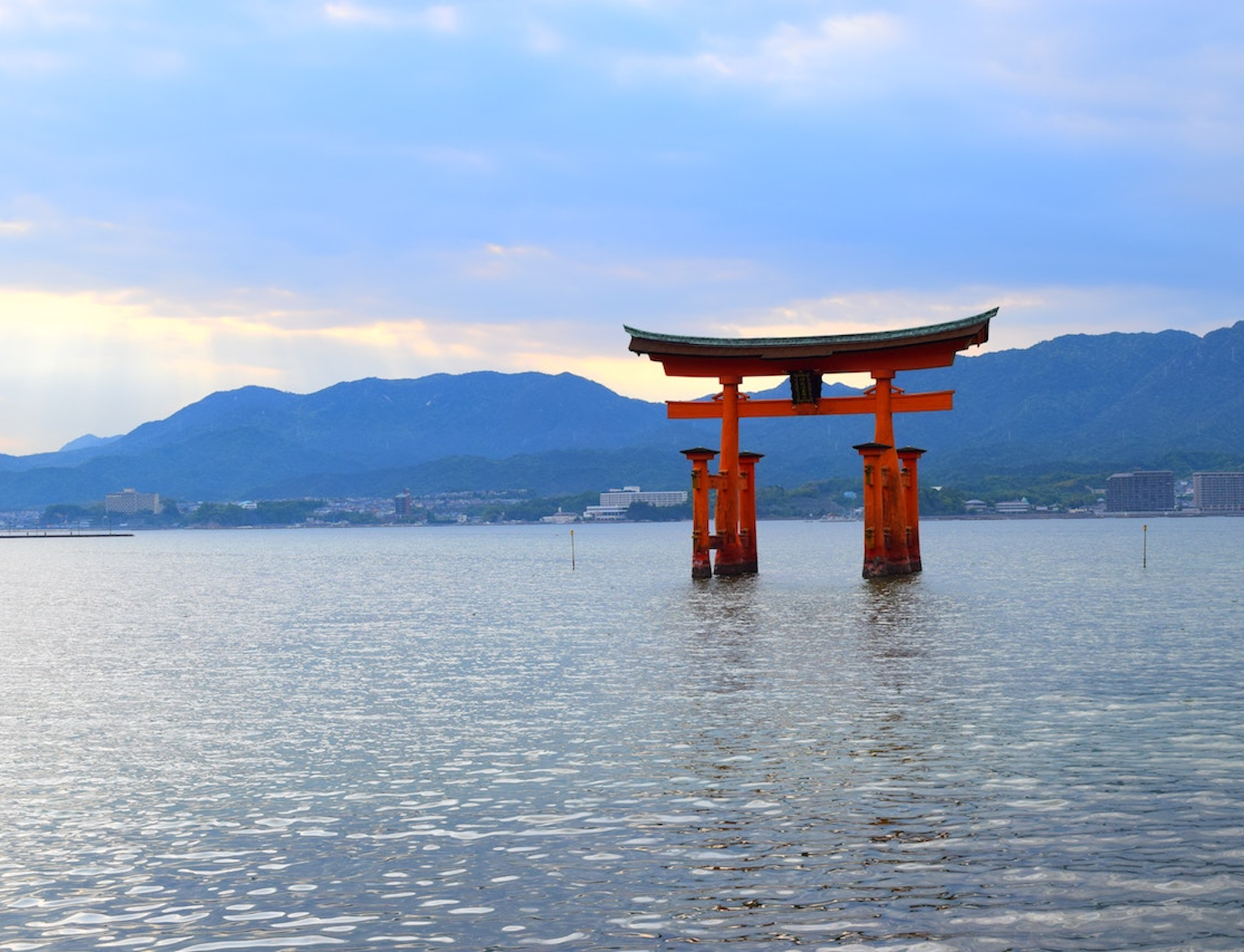
Experience the enchanting beauty of Miyajima Island on a unique rickshaw tour.

Camping in the rural areas of Hiroshima allows visitors to immerse themselves in the serene and picturesque landscapes of the Japanese countryside. Areas such as the Shobara region, located about 1.5 hours from Hiroshima Station, offer an idyllic retreat from the hustle and bustle of city life.
Here, you can set up camp amidst terraced rice fields, dense forests, and traditional satoyama settlements, where the lower hillsides are cultivated with crops like rice and buckwheat. Camping sites often come with modern amenities, ensuring a comfortable stay while you explore the surrounding nature trails, enjoy local hot springs, and participate in traditional Japanese activities.

The Mazda Museum in Hiroshima offers a fascinating dive into the history and technology of this iconic automobile manufacturer. Located at Mazda's headquarters, the museum provides a 90-minute guided tour that includes an in-depth look at the company's development from its inception in 1920 to its current innovations.
Visitors can see an impressive collection of historic vehicles, including the Le Mans-winning Mazda 787B, and observe the assembly line where various car models are produced. This unique experience combines education and excitement, making it a must-visit for car enthusiasts and those interested in industrial history.
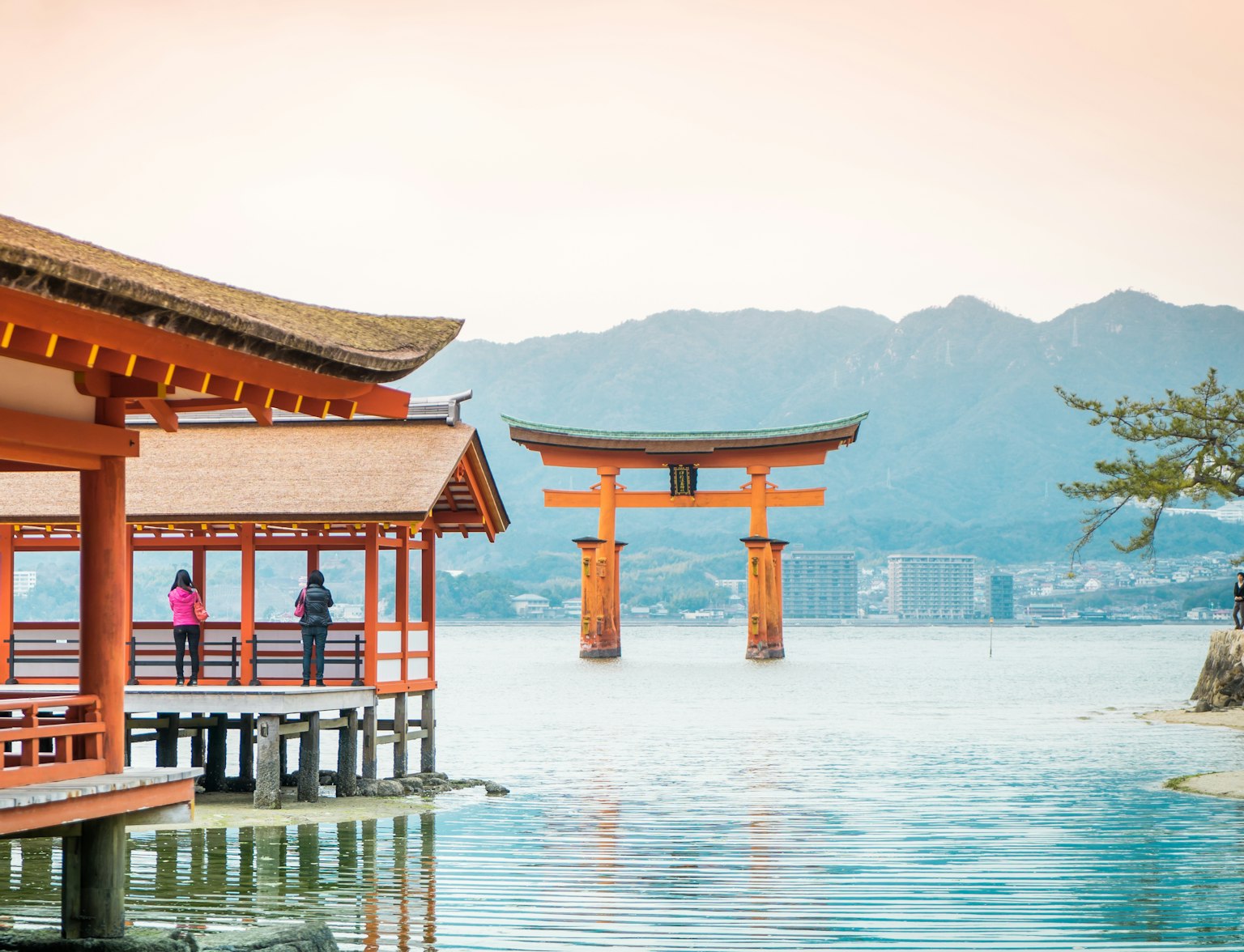
Uncover Hiroshima's tales on a full-day private tour.
Plan: Research the areas you want to visit and make necessary reservations, especially for popular spots.
Check the weather: Hiroshima experiences different climates, so dress appropriately and be prepared for sudden changes, especially in winter.
Respect local customs: Follow the rules and guidelines, especially when visiting historical sites like the Atomic Bomb Dome or the Children's Peace Monument.
Stay hydrated: Carry enough water, especially on hot, sunny days.
Use public transport: Hiroshima has excellent public transport, providing easy access to most attractions.
Protect the environment: Leave no trace and respect nature to preserve Hiroshima's beauty for future generations.
A Hiroshima trip offers a unique blend of historical exploration and natural beauty. From the poignant reminders of the atomic bombing to the serene landscapes and thrilling outdoor adventures, the Hiroshima prefecture is worth visiting.
Whether you're drawn by the history of the Hiroshima Peace Memorial Museum or the allure of Itsukushima Shrine, the city's surroundings provide a wealth of experiences that cater to all interests. Embrace the opportunity to explore, reflect, and enjoy Hiroshima's diverse offerings.
Embark on your journey and discover why Hiroshima remains a destination that captivates the hearts of many travelers worldwide.
What is remarkable in Hiroshima?
Hiroshima's other World Cultural Heritage site, the Atomic Bomb Dome, stands alongside Peace Memorial Park as a hope and an enduring monument to peace.
What are the excellent areas of Hiroshima?
Home to some of Hiroshima's most vibrant neighborhoods, including Motomachi, Kakomachi, Hodori, and Nakamachi, this area is a hub for top tourist attractions and landmarks. Visitors will find various great restaurants, hip bars, and trendy clubs, making it the perfect spot for sightseeing and experiencing the local nightlife.
What is Hiroshima known for today?
Hiroshima is home to two UNESCO World Heritage Sites: the Itsukushima Shrine, renowned for its majestic "floating" torii gate that stands in the waters of the Seto Inland Sea, and the Atomic Bomb Dome, a poignant symbol visited by people worldwide who come to pray for peace.
Is there anything to see in Hiroshima?
A tranquil park offering a reflective setting on historical wartime events, featuring the preserved Atomic Bomb Dome as a solemn reminder in Hiroshima, Japan.
Why is Hiroshima called the city of peace?
Today, Hiroshima leverages its tragic history as the first city to endure a nuclear bombing to educate the world about the catastrophic effects of atomic weapons and to advocate for global peace.
